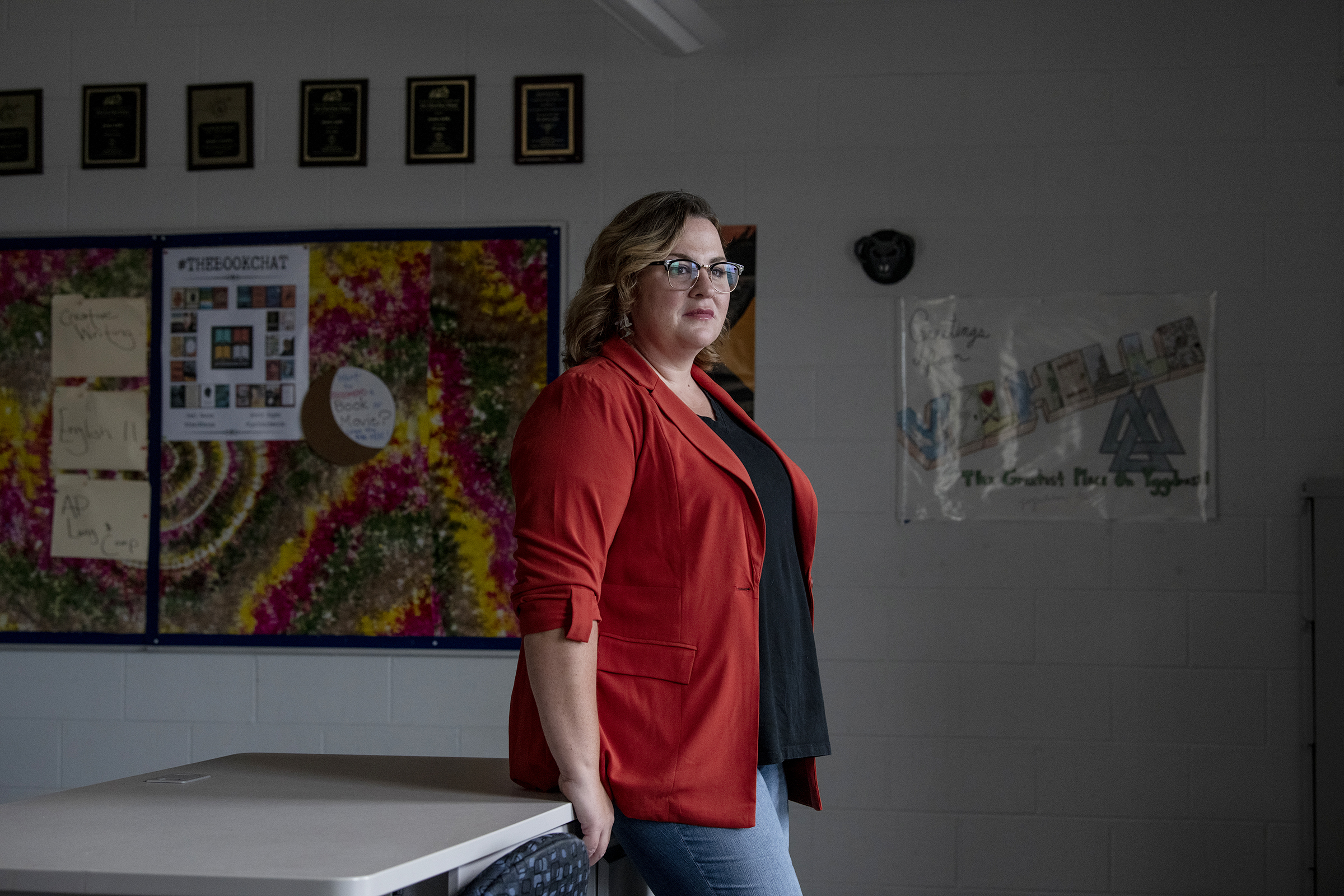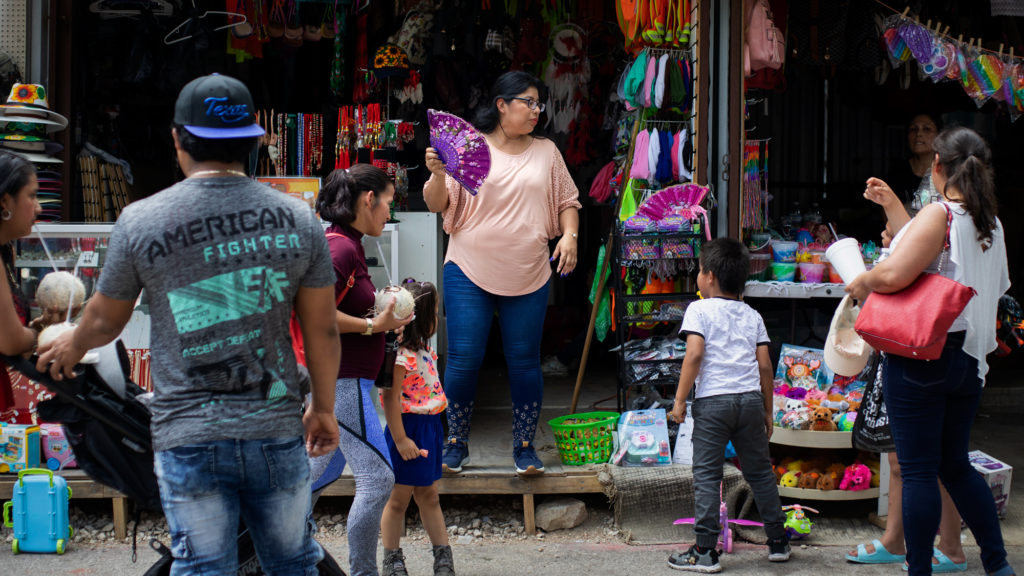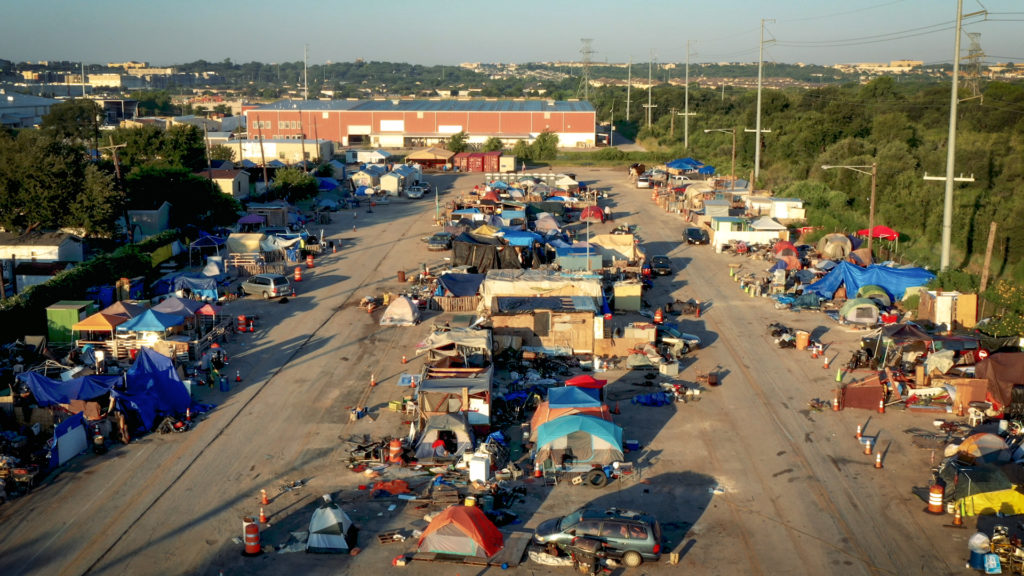This story was produced by 100 Days in Appalachia, an independent, non-profit digital news publication incubated at the Media Innovation Center at the West Virginia University Reed College of Media. Jessica Salfia, co-editor of the book 55 Strong: Inside the West Virginia Teachers’ Strike, is a writer, activist, and teacher at Spring Mills High School in Martinsburg, West Virginia. Her writing has appeared in The Washington Post, the Anthology of Appalachian Writers, the Charleston Gazette-Mail, 100 Days in Appalachia, and the WVCTE Blog.
In March, schools across the nation closed to protect students and families from the increasing threat of COVID-19. With little to no training and even fewer resources, teachers like me shifted our classrooms from physical to digital learning spaces.
This past spring, my days were spent at my kitchen table bouncing between high school English classes on Zoom to online discussion boards to helping our children – ages 13, 9 and 7 – with their own lessons and class calls.
In my 16 years as an educator, this was one of the most stressful teaching experiences I’ve faced But my family and I, along with the educators and administrators I work with, believed that shutting down schools and staying home would beat the virus back.
However, since the start of summer, I have watched in horror as counties and communities in Appalachia and across the country have relaxed public safety guidelines, reopened bars and restaurants, and insisted that schools reopen as well. All while coronavirus cases continue to climb, just as health experts predicted they would. Many rural school districts, especially those that had few to no cases in March, now have hundreds as we head into the start of another school year.
Teachers understand that we are facing an impossible situation, and while remote learning is imperfect and in many cases inequitable, in-person instruction for many teachers and families is potentially life-threatening.
But the calls to return to in-person schooling from politicians and some members of the public continue to grow louder. The White House recently formally declared teachers essential workers; some have gone so far to disparage the prospect of teachers and teachers’ unions going on strike if school districts require a return to the classroom with minimal social distancing and safety measures in place.
The Atlantic published an unfortunate op-ed by New York City nurse and writer Kristen McConnell titled, “I’m a Nurse in New York. Teachers Should Do Their Jobs, Just Like I Did.”
McConnell writes,“Instead of taking the summer to hone arguments against returning to the classroom, administrators and teachers should be thinking about how they can best support children and their families through a turbulent time. It’s time for teachers to get back to work.”
Teachers should be thinking about children and get to work? What makes you think we aren’t?
When the school year ended and summer began, every teacher I know set to work, trying to identify the best way to teach vulnerable students while also protecting their health and safety. Teachers have been providing valuable feedback to our districts, planning for both in-person and remote instruction, and meeting remotely with administrators and senior staff to create reentry plans to open schools safely. We have researched and collaborated and planned and trained.
The idea that educators have been sitting around doing nothing besides finding reasons not to return to the jobs we love is one of the most insulting arguments I’ve seen. We all want to be back in our classrooms, but we want to do so safely.
Unfortunately, the more we learn about the virus, the more concerns educators have. Many schools across West Virginia and Appalachia have poor ventilation, inconsistent air conditioning, and teacher and bus driver shortages. With cases spiking across West Virginia, many teachers and families feel remote learning is the safest scenario for their districts right now.
Beyond the question of safety, there are also concerns around equity and resources to support healthy learning.
While many other first-responders, frontline workers, and essential staff in various industries have been provided greater compensation or hazard pay, this is not true for teachers.
According to Zip Recruiter, the average salary of an intensive care nurse in New York City is $104,202 a year, not including COVID care bonuses and overtime. A friend of mine who is a nurse in West Virginia was offered $15,000 a week in addition to her salary to go work in a New York City hospital during their COVID surge in April.
According to the Bureau of Labor Statistics, teachers in West Virginia are among the lowest paid in the country. Recent figures estimate that the average annual income for a high school teacher in West Virginia is $45,240. We have not been offered hazard pay to return to school in the midst of a global pandemic, even as cases continue to rise across Appalachia and the South.
In addition to the vast discrepancy in salaries, teachers are not given the same access to robust supplies of PPE. Instead, I will wear a single cloth mask for the duration of the school day in a room with 20 teenagers, also in cloth masks — teenagers who may or may not leave those masks on. I will try to keep those 20 teenagers six feet apart in case they are COVID-positive but asymptomatic, all while teaching them to be better readers, writers, and humans. If I am exposed to COVID-19 and have to quarantine, there may not be a substitute teacher available to cover my class or my lessons.
And then there’s funding. I have never seen a nurse, hospital, or law enforcement agency forced to create its own GoFundMe campaign for supplies or tools or instruments to do their jobs properly, but this is a regular occurrence in public education. I certainly agree that public schools are a vital and integral part of our society, but public education has never been funded like the essential service that it is.
Educators in America are not healthcare workers, but many in the US view public schools as a catch-all – the societal safety net. In addition to an education, we feed kids who need to be fed and, in some cases, provide medical care and counseling they can’t access anywhere else.
America’s teachers are given the responsibility of the social, emotional, physical, and mental well-being of the children in our communities, and we have risen to meet these needs as best we can with our limited resources. So, is it any wonder that when asked to force our students and ourselves into a potentially dangerous situation we have balked?
We are conditioned to protect the kids in our care, and pushback against premature or unsafe school reopening plans is another version of this compassion and concern. Teachers are not whining. We’re making sure that when and if schools open, they are safe and can stay open to students and teachers. We are speaking out because we want our students, our families, and our communities to be safe.
But so far, many schools have not reached that threshold. Across the country, districts that are opening too soon, without appropriate safety measures in place, are having to immediately close and return to remote instruction because of COVID outbreaks. This is an unnecessary stress on both teachers and students, which is why teachers are advocating for safety measures now so that we don’t end up in such situations.
This is not the time for frontline workers to turn on each other. This is a time for worker solidarity. As Sarah Jones recently wrote for The Intelligencer, “There are obvious incentives for Trump and his allies to pit essential workers against each other. Workers themselves shouldn’t take the bait.”
When we stop picking each other apart and look around, we’ll see the wealthiest folks in this country choosing remote learning for their children, or forming “learning pods” guided by private tutors. Most Board of Education meetings are still being conducted via Zoom for safety, and the President of the United States’ own child will attend school remotely until the pandemic subsides. Even some primary care physicians and nurse practitioners are choosing telemedicine when possible so that folks can stay home, where it’s safest.
Teachers are absolutely fulfilling the role this nation has asked us to fill. My essential service to this country is to provide young people with the best and safest educational experience possible. More and more, advocating for our students, our communities, and ourselves is just the type of “work” teachers are being called to do.




